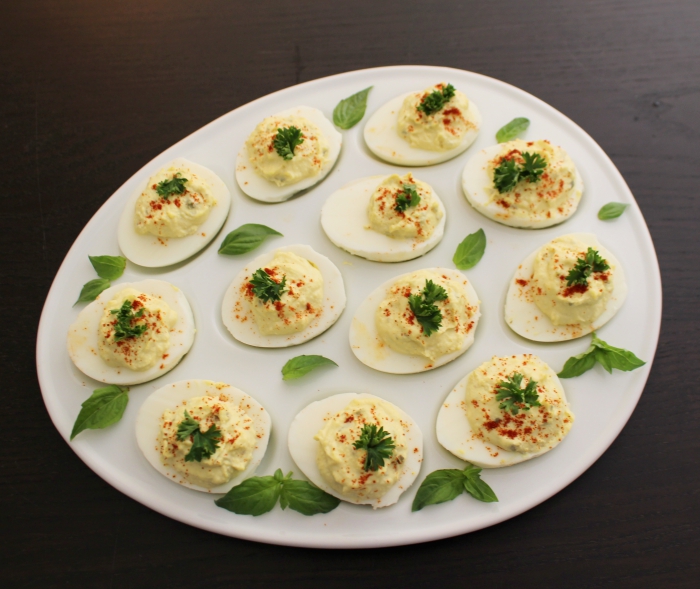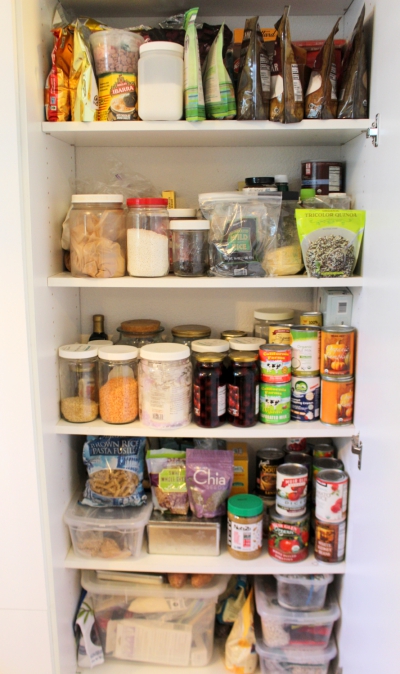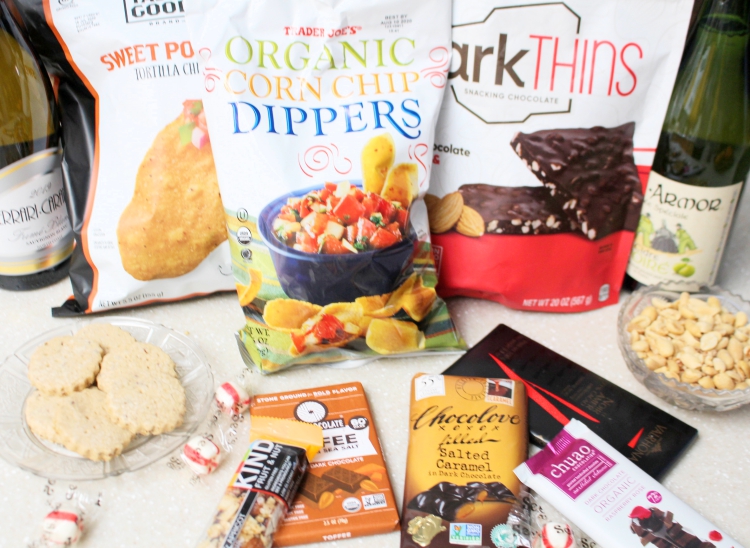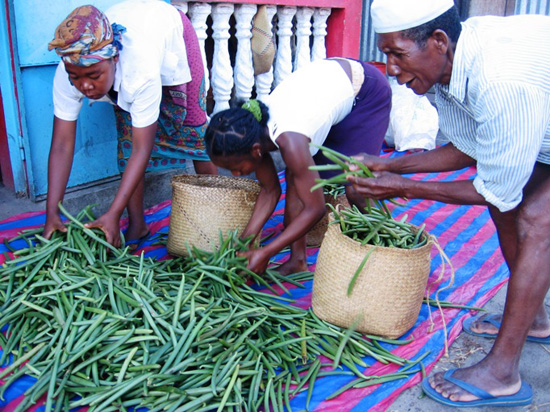
I'm amazed at how superior your vanilla is!
– Des, The Grommet
What’s In Your Pantry? Part Two
Wow! Who would have thought that writing about pantries would be fascinating. I effectively stepped back into our American past when pantries were crucial for making it through the winter. At the same time, we’re exploring how to best navigate a segment of our current, rather challenging history, as it unfolds.
I’ve realized how important well-thought-out pantries are, especially right now, given the breakdowns in our nation’s food supply chain. Farmers who grow food for restaurants that were suddenly closed didn’t have a Plan B to divert their produce to places where it was needed. (Fortunately food banks and volunteers stepped in to transport and distribute some of the produce where it was most needed. The rest rotted in fields.) Animals were slaughtered and buried due to closed meat processing plants. Even recruiting enough farm workers for the maintenance and the harvesting of the food crops we depend on has been fraught with issues, including cramped barracks for single workers, and small, often sub-standard housing for families, both of which have created outbreaks for the virus.
Simultaneously, I’ve been thinking about the struggles of newly unemployed families as well as low-income seniors and single parent families, all facing potential food insecurity, and the challenges for food banks as they struggle to get enough food to provide for all who need it. One thing that’s certain; the pandemic has exposed the many breakdowns in our infrastructure that we would be wise to address.
I’m interested in your thoughts and comments. Do you have an organized pantry system that allows you to go shopping every few weeks or are you dependent on shopping frequently? One big issue is where to set one up. Storage space varies given that some of us are apartment or mobile home dwellers and some of us live in substantial homes. Some of us are urban, others are rural, where a trip to the nearest market may be may be an hour or more away. A lot of us live alone, while many have families or housemates, and there are an increasing number of us who require special diets. Regardless of our situation, we all need to eat. So stepping back a few generations, it’s interesting to look at how food security was addressed.
Root Cellars and Kitchen Pantries
My mother talked about the root cellar on the family dairy farm in Ontario, Canada, where she spent summers, as well as their home pantry and root cellar where she lived in Akron, Ohio, as a child.
The root cellar was typically a basement-level room, especially in the regions with cold winters, or a room off the kitchen in more temperate climates. Either in the root cellar or the kitchen pantry, shelves were filled with canning jars of ripe tomatoes, green tomatoes, peaches, pears, plums, apricots, cherries and more. There were also pickles, chutneys, catsups and piccalilli, marmelades, jams, jellies, apple butter and conserves, and in some homes a large ceramic crock with sauerkraut, pickles or olives, or even brandied fruits.
The last harvest from the family kitchen gardens – usually September or October – likely included at least some of the following: carrots, cabbages, onions, garlic, potatoes, sweet potatoes, turnips and parsnips, salsify, celeriac and rutabaga, and winter squashes. The root crops were carefully bagged, wrapped or left loose, and stacked on wooden shelves. Some of the vegetables, such as potatoes or sweet potatoes, were harvested earlier in the season and stored.
Apples and pears were also stored in the root cellar, but separated from the vegetables as they release ethylene gas as they ripen, and could cause the vegetables to rot.
Families on farms and ranches often had meat carcasses or hams aging on hooks in a cool, dark room. Odd cuts of meat could be sliced thinly and made into jerky. Needless to say, it was a very labor-intensive process, and success depended on the weather and often good luck. Needless to say, there were good years and lean years, but being prepared helped.
Refrigeration
In the 1840s the first ice boxes were created to help keep perishables such as meat, eggs, butter, milk and produce fresh. The boxes were designed similarly to a wooden cabinet. They were lined with tin or zinc, and one side held a block of ice that would keep the rest of the cabinet cool. Ice was stored in ice houses built with thick, insulated walls. The ice was harvested from frozen streams and lakes and cut into blocks in the winter, wrapped in burlap, and often salted to keep the ice stable. In the cities, ice was delivered to homes on a regular schedule similar to the way milk, cream, buttermilk, etc. was delivered to families.
It wasn’t until 1913 that the first refrigerators for home use were invented. In 1923 Frigidaire introduced the first self-contained units. Also in the 1920s, the introduction of Freon made refrigerators far more stable. But it wasn’t until 1940 that home freezers with enough space for more than ice cube trays, were included in refrigerators.
Refrigerators were not cheap, so more sophisticated ice boxes were used in many homes until after World War II, even longer in rural areas that hadn’t yet been wired for electricity. My family moved into a home in 1947 that didn’t come with a refrigerator. In the basement was an ice box, which my parents brought up to the kitchen and used until they were able to purchase a refrigerator.
Our house was built on a hillside with cement steps leading up from the street below to a staircase off the basement. The ice man came in a truck, then lugged a large block of ice up the flights of stairs to our kitchen, holding the ice in place with large iron tongs. Once in the kitchen, he loaded the ice into the compartment on top and we were set for another week. As a small child, I found the entire ritual thrilling. Fortunately for my mother, a modern refrigerator arrived within a few months.
I’ve included this historical window as a reference point for how pantries have evolved over time and how important they still are for all of us, whether we live in cities, the suburbs, or in rural areas. Without a well-stocked pantry, we are vulnerable if a crisis occurs, such as a blizzard, major rain storm, an earthquake, or the current pandemic. It also reminds us of how tough (and hard-working) our forebearers were!
This brings us to what we consider the most important things to keep in our refrigerators and freezers.
Once again, some of us are dependent on going to the market on a regular basis, if all we have is a small refrigerator in an apartment, as opposed to those who have big refrigerators and lots of freezer space.
Milk, eggs, cheese and butter are pretty standard refrigerator supplies. That said, when markets are close by and we’re accustomed to going out on the spur of the moment because we’re down to two eggs or suddenly out of milk for breakfast cereal, we don’t have to think about this. Or do we?

Something we’ve learned when we went into quarantine is that our food supply chain isn’t as reliable as we assumed. Remember how eggs were suddenly in short supply? Chickens in a natural environment, stop laying eggs in the winter. While occasionally they’ll produce a surprise egg or two, it’s not like early summer when you can count on at least one egg a day per chicken. While normally we can find eggs pretty easily, when we learned we were going into quarantine, people bought extra eggs and suddenly eggs were, to quote an old expression, “rare as hen’s teeth”. Cows also produce less milk in the winter and early spring, which means less milk and butter is available if people panic-shop.
If we have a major flare-up of the virus in the autumn, as some epidemiologists predict, or even, as I write this, we have a large surge in cases as cities open up, it’s important to think carefully about what you most need and depend on for daily food.
Shelf-stable milk or plant milk is a good back-up for refrigerated milk. It’s a little more tricky with eggs, though eggs kept in their boxes in a refrigerator at 36 – 39 degrees Fahrenheit, can easily stay fresh for a month. Having a box of shelf-stable egg-replacement for making pancakes, muffins or waffles, is a consideration if you bake a lot. Butter and some cheeses can be frozen for several months without damaging their flavor.
Imported Produce
Normally we can count on fresh produce from California, Florida, Mexico, Central and South America to supplement local produce throughout the year. That said, the virus is extremely active in Latin America currently. Brazil is second only to the US in confirmed cases and deaths. Peru, which early on was under strict lockdown, has had an enormous surge of cases as South America heads into their winter. Ecuador has had a disastrous time as one of the early hot-spots, including a very high proportion of deaths per-capita, and Chile is struggling now, as well. As a result, we can’t count on these countries for a good supply of produce this year. This is where freezers are helpful.
Root vegetables such as carrots, radishes, beets, etc. hold up fine in refrigerator bins as do lettuce, cabbage, kale, spinach, celery etc. Potatoes and sweet potatoes usually last well in a dark cupboard for several weeks before sprouting. On the other hand, most of our garlic is imported from China these days. If you have a garden, garlic is easy to grow. Break the bulb apart, plant it “pointy side down,” harvest when the new bulbs are ready and allow it to sun-dry for a day or two, then store it in a dark cupboard or refrigerator bin. Check the Internet for details.
Most of our frozen produce goes from field to freezer in hours. Peas, sweet corn, green beans, spinach and other produce we normally buy fresh, can fill-in as we move into winter, especially as a back-up if things get as difficult as predicted. Ditto with canned vegetables and fruits, if you tend to lose power in your area during storms.
If you haven’t perfected making sourdough starter and fresh bread during quarantine this spring, you may have a chance to try again this winter. Most definitely buy yeast, just in case. If you have the space, stock up on flours and store some in the freezer as backup.
We’ve seen how and why our meat supply chain is unstable. If meat is a mainstay in your home, you will want to stock up as you can so that you have some available when you most want it.
Power Outages
This brings up something that kept me awake at night when I was considering freezers full of food. Countrywide we have weather events that can wreak havoc on frozen food. As droughts become more common, the risk of major fires is a given, especially in the West. In California, this can mean power outages. Hurricane season is starting earlier than usual and lasting longer. And what about Derechos and tornadoes?
Depending where you live, plan on using up the most expensive foods in your freezer by mid-to-late summer in the West, March or April in Tornado Alley, and June in hurricane territory, unless you have a backup generator.
Canned and Smoked Fish and Meats
This brings us back briefly to our dry pantries. While fresh seafood is wonderful, come late autumn and winter, canned Alaska salmon, wild-caught albacore, and tins of sardines can be included in pasta dishes salads, or made into fishcakes. Rich in Omega 3’s, they’re also healthy for us. Packaged or frozen albacore make great sandwiches or Tuna Melts.
Canned chicken can easily be made into Creamed Chicken, Chicken Tetrazzini or Chicken Salad.
Smoked trout, albacore and cold or hot smoked salmon can dress up a salad or toast like nothing else. It comes in cans and also in packages in market coolers that will last in the refrigerator for weeks if placed in containers. Perfect for a special meal or holiday celebration.
Also, in the cooler and meat sections you can find smoked chicken and turkey, ham, sausages, pepperoni, salami and more, that are either shelf stable or can be stored in the refrigerator or frozen.
Condiments
Ketchup, mayonnaise, pickles, capers, soy sauce, miso, curry paste, honey, maple syrup… the list goes on. Make sure you’re stocked with whatever condiments you use regularly; you’ll be glad you have them.

Don’t Forget Flavors and Spices!
While the general word on herbs and spices is they’re viable for about six months, my experience is several of them last longer in a cool, dark drawer or cupboard. You can also add more than the recipe calls for if the flavor has faded. If you can, grow your own chives, sage, oregano, thyme, tarragon, dill etc. in pots or in a section of your garden, if you have one. I grow pots of herbs on a small, sunny deck. As it grows closer to autumn, I harvest some of them and dry them for winter. You can also buy fresh herbs and dry them on a cookie sheet at home. Otherwise, buy the ones you use most in larger sizes, and the ones you use less often in small sizes.
As for spices, buy whole nutmegs and grate them when you need them. The flavor lasts and it’s a wonderful, versatile spice for both savory and sweet foods. If they still have the lacey covering on the nut, that’s mace, which adds a nice flavor to stews.
Buy cinnamon bark if you’re using it in hot beverages. Some people prefer the strong Chinese or Indonesian cinnamon, also known as cassia. You’ll find this cinnamon in most supermarkets.
Personally, I prefer true cinnamon, also known as canela. You’ll find it in spice shops and Mexican markets. It’s less  harsh and delicious made into tea. Cinnamon, cloves, ginger and allspice are a must for pumpkin pies, cakes, muffins, donuts and lattes. Candied ginger is really good in Ginger Snaps, Gingerbread, or just eating, if you’re a ginger fan. Fresh ginger is best in stir-frys or other Asian cuisine. I’ve frozen fresh ginger root with mixed results. However, it’s also sold in small jars. It lasts well in the refrigerator once it’s opened.
harsh and delicious made into tea. Cinnamon, cloves, ginger and allspice are a must for pumpkin pies, cakes, muffins, donuts and lattes. Candied ginger is really good in Ginger Snaps, Gingerbread, or just eating, if you’re a ginger fan. Fresh ginger is best in stir-frys or other Asian cuisine. I’ve frozen fresh ginger root with mixed results. However, it’s also sold in small jars. It lasts well in the refrigerator once it’s opened.
As per vanilla, whether you use extracts, whole beans, ground beans, or paste, store all in a cool, dark cabinet. There’s more information on smart vanilla storage in the Learn section found in the banner near the top of our Home Page.
A Word About Hoarding or Over-Stocking
One of the most enlightening articles I found during my pantry research, talked about foods we might buy in volume (not talking about toilet paper here) that people with particular illnesses or allergies depend upon for survival. Several nutritionists provided input on this. (Regrettably, I misplaced the name of the author of the article.) While it’s completely understandable that we would want to stock up on supplies in an emergency, it’s also important to know that there are people whose lives depend on certain fresh, frozen, canned or boxed foods. In other words, we need to be mindful and not clear the shelves.
People with kidney disease need to avoid Vitamins A, E, and K, as well as minerals such as potassium, magnesium, phosphorus and calcium. However, blueberries, strawberries, raspberries, cherries and cranberries, are low in these minerals, and therefore safe for them. They are also low in sugar and high in Vitamin C. It’s fine to buy these fruits; just don’t buy fresh or frozen berries in volume.
Grain Allergies and Celiac Disease are increasingly common and imperative for people with either of these issues to avoid gluten. If you’re at the store and find bread and flour in short supply, just know that the flours used in gluten-free products are also likely to be in short supply. Unless you can’t have wheat or gluten, don’t purchase the certified gluten-free products. Fresh breads are typically delivered mid-week; if bread has been in short supply, check with your market before going, and leave the gluten-free products for those who depend on them, especially important for children with celiac.
COPD and Cancer patients can burn up to 10 times more calories than healthy people. They depend on high-calorie and nutrient-rich beverages such as Ensure and/or protein powders and pre-made smoothies. Many don’t have the energy or ability to make their own smoothies. Be mindful when buying these pre-made or packaged products. Instead make your own smoothies and shakes, or use powders or low calorie protein shakes not recommended for medicinal purposes.
Gall Bladder Disease and Pancreatitis patients cannot process or digest fats and depend on low-fat diets. Non-fat dairy and low-fat plant milk (rice or oat milk) are critical for them. If stock of these products is low, purchase plant milk that is slightly higher in fat such as Almond Milk and Low-fat dairy milk.
Chronic Kidney Disease, Lung Diseases, Hypertension and High Blood Pressure A surprising number of medical conditions require a super-low sodium diet. When regular canned or boxed soups, beans, stews, tomatoes, etc. aren’t readily available (this happened when we learned we were going into quarantine) it’s important not to purchase lots of low-sodium foods. Pick up frozen or fresh substitutes and leave the low sodium foods for those who really need them.

Comfort Foods
Yes! You know best what calls to you. From snacks to casseroles to cookies, or a glass of good wine with mixed nuts or dark chocolate, make sure you have a stash tucked away, along with the ingredients for a favorite meal that makes everything seem better. When I did an informal survey of friends about what they considered staples and what they considered comfort foods, the consensus was wine and spirits are a comfort food and a staple… ideally in moderation!
In closing, although our cities are opening up, keep in mind that things can change in a heartbeat. If you haven’t created a good backup pantry, now’s the time to do it. And check your emergency supplies, such as battery-operated camp lanterns and extra flashlight batteries, basic medical supplies, an extra month or more of prescription medications, bottled water and paper products (and chocolate). Think of this as an adventure, one that will save you time, energy, conserve gas and serve you well.
I was given a small bottle of Rain’s Choice in a gift basket and I have been hooked ever since. The flavor makes all of my baking so much better! I will never use grocery store vanilla again!


© 2021. All Rights Reserved
Designed/Developed by Kat & Mouse
One Response
Thank you so much for taking time to write your informative articles in such a personal and entertaining way! I really learn a lot and look forward to them each month. Stay well Ms. Rain!!